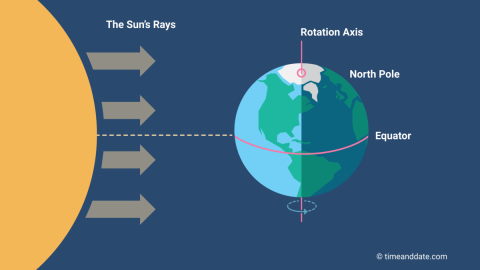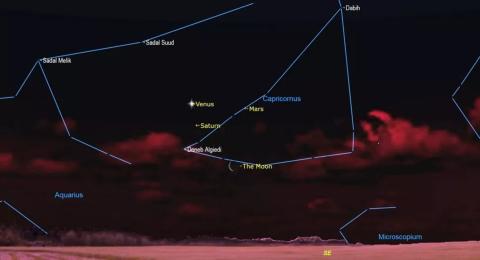The March Equinox: The First Day of Spring
March 18, 2022With the changing of the seasons, changes within our solar system are happening as well. This can be attributed to the fact that although there are 24 hours in a day, it takes the earth 23 hours and 56 minutes to complete a full axis rotation around the sun. Those extra 4 minutes every day add up, and with the axial tilt of the earth, these elements make it so that celestial bodies are seen at differing locations and magnitudes throughout the year. This also gives us our four seasons of spring, summer, winter, and fall, as the temperature on earth is relative to its positioning towards the sun.
During the month of March, there are several celestial events to keep watch for – most notably, the March equinox on the 20th, which denotes the “first day of spring”, happening this weekend. The equinox and the first day of Spring are directly related, as this is the day when the earth begins to tilt more towards the sun, creating longer days of light and warmer temperatures for the northern hemisphere. For the southern hemisphere, this day is when autumn begins, with shorter days of light and cooler temperatures. At approximately 11:33 a.m. EDT, the sun will pass northward along the celestial equator (a linear area in the sky above the earth’s equator). The earth’s tilt at this time will be equal to zero in relation to the sun, with its axis perpendicular to the sun’s light. This will result in a 24-hour period that will have equal day and night hours of approximately 12 hours each. The days following this event will start to have longer light hours than night hours for most areas in the northern hemisphere. While you cannot actually observe the March equinox using a telescope, you may notice the longer daylight on this day.
There will be other celestial happenings this month that are observable, however. On Friday, March 25 at 1:37 a.m. EDT, the moon will be in its third quarter phase where it is half-illuminated at that stage. Rising around midnight, it will remain observable until it sets later in the morning. The following week will feature dark, moonless skies that are ideal for sky-watching.
During March evenings, you will be able to see the constellations more clearly, such as the astrological Taurus with the Hyades Star Cluster formation at the Y- connection point, the Big Dipper, and other celestial groupings.
On Monday, March 28, a crescent moon will be nestled with Mars, Venus, and Saturn during the predawn hours around 5:30 a.m., offering a great photo opportunity.
Capitol Tech offers many opportunities in aviation and astronautical sciences, where you can study celestial bodies and contribute to NASA research. With the arrival of the University’s ALPHA Observatory, new methods and hands-on experience will be explored in the classroom and the Space Flight Operations Training Center (SFOTC). To learn more about these programs, visit captechu.edu and view the various courses and degrees offered. Many are available both on-campus and online. For more information, contact admissions@captechu.edu.
References:
Almanac. (2022). First day of spring 2022: The spring equinox. https://www.almanac.com/content/first-day-spring-vernal-equinox
Rao, J. (2011). Why the night sky changes with the seasons. https://www.space.com/10821-night-sky-changing-seasons.html
Vaughn, C. (2022). Best night sky events of March 2022 (stargazing maps). https://www.msn.com/en-us/news/technology/best-night-sky-events-of-february-2022-stargazing-maps/ar-BB1fgyVY
Written by Erica Decker




